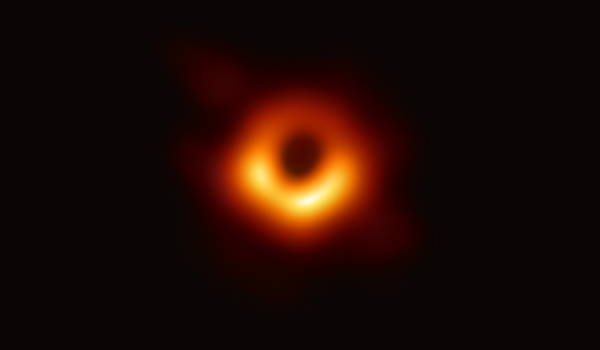At six simultaneous press conferences around the globe, astronomers in April announced they had accomplished the seemingly impossible: taking a picture of a black hole, a cosmic monster so voracious that light itself cannot escape its clutches.
This historic feat, performed by the Event Horizon Telescope (EHT)—a planet-spanning network of radio observatories—required more than a decade of effort. The project’s name refers to a black hole’s most defining characteristic, an “event horizon” set by the object’s mass and spin beyond which no infalling material, including light, can ever return.
“We have taken the first picture of a black hole,” the EHT project’s director, Sheperd Doeleman, said in a news release. “This is an extraordinary scientific feat accomplished by a team of more than 200 researchers.”
On supporting science journalism
If you're enjoying this article, consider supporting our award-winning journalism by subscribing. By purchasing a subscription you are helping to ensure the future of impactful stories about the discoveries and ideas shaping our world today.
The image unveils the shadowy face of a 6.5-billion-solar-mass supermassive black hole at the core of Messier 87 (M87), a large galaxy some 55 million light-years from Earth in the Virgo galaxy cluster. Such objects are a reflection of Einstein’s theory of general relativity, which predicts that only so much material can be squeezed into any given volume before the overwhelming force of its accumulated gravity causes a collapse—a warp in the fabric of spacetime that swallows itself. Left behind is an almost featureless nothingness that, for lack of better terms, scientists simply call a black hole.
Once thought to be figments of theorists’ wildest imaginings, black holes are now known to be crucial arbiters of cosmic structure, profoundly affecting the formation and evolution of stars and galaxies across the universe. The one in M87, for instance, is devouring a whirling accretion disk of material, which just outside the event horizon powers a star-scouring jet of intense radiation and relativistic particles blasting some 5,000 light-years out from the galaxy’s core.
Analyses of the image—published in a series of six papers in the Astrophysical Journal Letters—confirm that within the limits of the EHT’s present sensitivity the shape and behavior of M87’s black hole fits Einstein’s predictions.
“If immersed in a bright region, like a disc of glowing gas, we expect a black hole to create a dark region similar to a shadow—something predicted by Einstein’s general relativity that we’ve never seen before,” read a statement released by Heino Falcke, chair of the EHT Science Council. “This shadow, caused by the gravitational bending and capture of light by the event horizon, reveals a lot about the nature of these fascinating objects and allowed us to measure the enormous mass of M87’s black hole.”
But the best is yet to come; the EHT is planned to operate indefinitely and has also targeted the Milky Way’s central supermassive black hole, Sagittarius A*, in hopes of imaging our nearest, most familiar cosmic monster. Those results, project leaders say, will emerge from behind their own veil of secrecy in the future.
